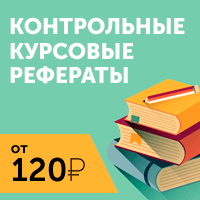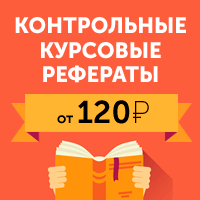 |
Lesson title. Vocabulary and language Focus. Literary genres. p.56 – p.57. Learning objectives(s). Lesson objectives. Level of thinking
|
|
|
|
Short term lesson plan III term (the ninth grade)
20019 – 2020 school year
| Unit of a long term plan: Unit 5. Reading for pleasure. Lesson plan 49
| School: | ||||||||||||||||||||||||||
| Date: | Teacher's name:
| ||||||||||||||||||||||||||
| CLASS: 9 | Number present: | absent: | |||||||||||||||||||||||||
|
Lesson title |
Vocabulary and language Focus. Literary genres. p. 56 – p. 57 | ||||||||||||||||||||||||||
|
Learning objectives(s) | 9. C9 use imagination to express thoughts, ideas, experiences and feelings 9. L1 understand the main points in unsupported extended talk on a wide range of general and curricular topics, including talk on a limited range of unfamiliar topics 9. S1 use formal and informal language registers in their talk on a range of general and curricular topics 9. S6 communicate meaning clearly at sentence level during, pair, group and whole class exchanges 9. C10 use talk or writing as a means of reflecting on and exploring a range of perspectives on the world 9. S7 use appropriate subject-specific vocabulary and syntax to talk about a range of general and curricular topics | ||||||||||||||||||||||||||
|
Lesson objectives | All learners will be able to: · Identify the theme, new words and use them as the basis for discussion. · Demonstrate knowledge for usage of the Past Simple describing literary genres. · Transfer information from the given information into a graphic organizer. Most learners will be able to: ·Select, compile, and synthesize information for an oral presentation · Provide a point of view in conversations and discussions; describe the plot of the book using active vocabulary. Some learners will be able to: · Respond to and discuss the reading passage using interpretive, evaluative and creative thinking skills. ·Make a presentation about genres of books. | ||||||||||||||||||||||||||
|
Level of thinking | Higher order thinking skills (according to the revised Bloom's taxonomy). | ||||||||||||||||||||||||||
|
Assessment criteria | · Listen to the given text of description of activities and identify the general information. · Demonstrate skills of organizing and expressing ideas accurately. · Illustrate a viewpoint in a discussion. | ||||||||||||||||||||||||||
|
Target language | Literature, Stylistics, genres, novel (gothic) contemporary, to involve in, to be good for. | ||||||||||||||||||||||||||
|
Values links | Responsibility, Global Citizenship, Respect and Love to people and school, Care to modern technology. | ||||||||||||||||||||||||||
|
Cross-curricular links | Literature, Stylistics, Social Science, Psychology, Information Technology, Sport and Health Care. | ||||||||||||||||||||||||||
|
Previous learning | Vocabulary relating to genres and types of literature, the meaning of reading books nowadays. | ||||||||||||||||||||||||||
|
Plan | |||||||||||||||||||||||||||
| Planned timings |
Planned activities (replace the notes below with your planned activities) |
Resources
| |||||||||||||||||||||||||
| Start 3 min 5 min | The lesson greeting. Pre-learning (W) Teacher greets the class and suggests playing the game to the learners. Teacher explains the rules for this game. · Game “Back to Blackboard” Rules: One person stands back to the portraits of famous writers of different countries; Classmates should not call the name of a writer but try to speak about his/her book; Classmates can give some associations with the book; Classmates can mime the plot of the book; Classmates can sing some lines from the songs. · Teacher can organize competition between two teams, when the first team mimes, the second should guess the famous person.
The teacher sets the lesson objectives, letting students know what to anticipate from the lesson. Warm up. Free talk about literature and books. Look at the portraits of some writers and name the books you read at the lessons. How many books do you read a year? When did paperbacks first appear? |
Slide (useful phrases)
Pictures PPT
1.
Whiteboard Writing Worksheet
| |||||||||||||||||||||||||
| Main part 15 min |
Lead-in (W, I) · Vocabulary work Revise the genres of books pupils know making a listby asking students to add more words to the list they already guessed. Brainstorm with the class and write words on the board as pupils call it out. Organise the class into four teams. Ask a student to come to the front of the class and give him/hersubject card. (E. g. Fiction). Say the whole class can ask a maximum of 10 questions to discover a subject. He/she can only give Yes or No answers. Demonstrate the question types and their short answer forms:
Name the genres of books. Ex. 2 – 3 p. 56. Read the information about genres and describe them with complex nouns from the table. Ex. 4 p. 5
PRE - LISTENING TASK: Ex. 4 p. 57( Check the meaning of phrases and add your word - combinations from ex. 3): Contemporary detective story While - listening task: listen to two people talking about the books. Which of them are they talking about? In pairs ask questions to get more details. Answers: 1. Call of the wind 2. Daffodill 3. Wuthering Heights 4. Persuasion 5. The Prince and the Pauper. Compare two books according to their description in Ex. 4 and complete the diagram.
Use compound nouns while describing a book. Give definitions to: convincing, fast – paced, gripping, imaginative, thought – provoking, humorous, contemporary. (W. B. Ex. 1-2 p. 38). The teacher has brought some English books from the library, ask the pupils about the genres. St. s try to describe them and tell the teacher what book they would like to read and make a presentation at the end of this unit. |
Whiteboard
Writing Worksheet
Student Book p. 56
Student Book p. 56
Pictures" Test your knowledge" on genres of literature.
CD 2. 13
Writing Worksheet
Student Book p. 57
Venn Diagram
Ex. 7 CD 2. 13 Writing Worksheet English Books
| |||||||||||||||||||||||||
| End 3 min. | Home task. WB p. 38 Students express their attitude to the lesson and give self-assessment using the method: “ Six thinking hats ”: · Green: How can you use today's learning in different subjects? · Red: How do you feel about your work today? · White: What have you leant today? · Black: What were the weaknesses of your work? · Blue: How much progress have you made in this lesson? (Now I can, I still need to work on, I've improved in, today I learnt... ) · Yellow: What did you like about today's lesson? |
Slide (Homework) Slide " Six thinking hats"
| |||||||||||||||||||||||||
|
Additional information | |||||||||||||||||||||||||||
|
Differentiation – how do you plan to give more support? How do you plan to challenge the more able learners? |
Assessment – how are you planning to check learners’ learning? |
Health and safety check | |||||||||||||||||||||||||
| Differentiation can be achieved through content (Based on the theory of Multiple Intelligences different tasks are used with the same text). By support: Less able learners will be supported through step-be-step instructions, glossaries, thinking time. By task: For more able learners additional leveled tasks are offered.
| Assessment criteria: · Read the given passage and identify the general information. · Demonstrate skills of organizing and expressing ideas accurately. · Illustrate a viewpoint in a discussion. Descriptors: A learner · reads the text for global understanding; · selects meaningful information, constructs the answer; · presents information in the group discussion. · evaluates the peers’ answers. Teacher's observation using observation checklist (Appendix 2 - reference to the resource " Literature Circle Role Sheets" by Christine Boardman Moen. p. 28) and monitoring. Self-assessment. | Health saving technologies. Make sure power cords are not a tripping hazard Everyday classroom precautions
| |||||||||||||||||||||||||
|
|
|










